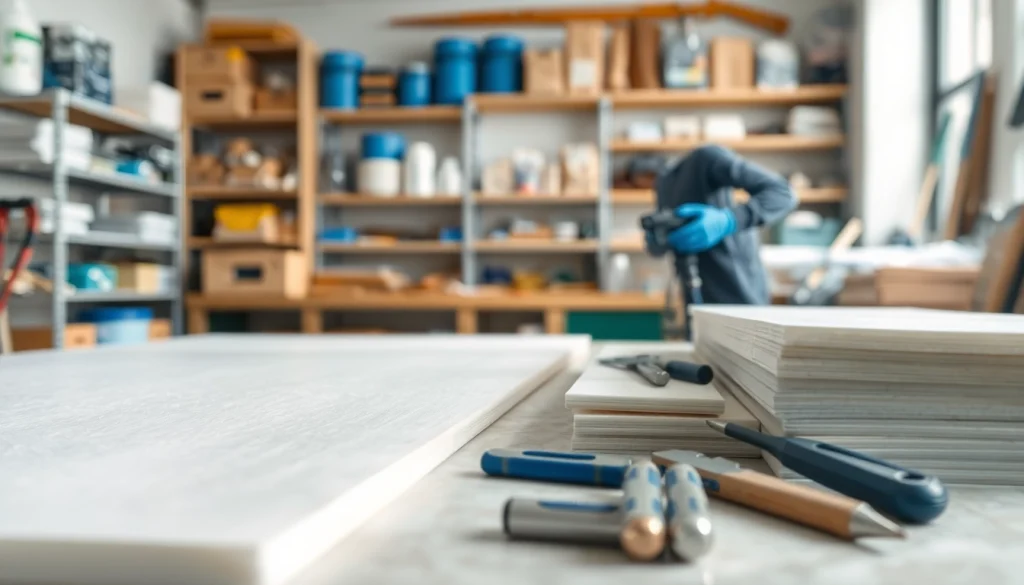Comprehensive Guide to Laminating Resin: Applications, Tips, and Techniques

Understanding Laminating Resin
What is Laminating Resin?
Laminating resin is a specialized adhesive used primarily in composite material applications. This synthetic polymer is designed to bond layers of materials, providing structural integrity and enhancing the durability of products. Laminating resin is particularly popular in industries such as boat building, automotive, and construction, where its chemical properties enable it to withstand extreme conditions and stress.
The resin typically comes in two primary forms: polyester and epoxy. The choice between these two often hinges on the specific requirements of the project at hand, with each offering unique benefits and properties. For example, laminating resin made from epoxy tends to provide better bonding strength and is more resistant to moisture compared to its polyester counterpart.
Types of Laminating Resin
Understanding the types of laminating resin is crucial for selecting the right product for your application. The two most common types are:
- Polyester Laminating Resin: This type is affordable and has a wide application range, particularly in the marine industry. It is easy to work with, making it ideal for novice users and applications that require large amounts of resin.
- Epoxy Laminating Resin: While more expensive, epoxy offers superior adhesion and chemical resistance, making it suitable for high-performance applications. Epoxy resins are often preferred where strength and durability are paramount, such as in aerospace and high-end sporting equipment.
Applications of Laminating Resin
Laminating resins are versatile and can be applied in various settings. Here are some of the primary applications:
- Marine Construction: Used in creating fiberglass boats and crafts, marine-grade laminating resin is resistant to moisture, ensuring longevity and safety on water.
- Automotive Industry: Laminating resins are utilized to bond and reinforce vehicle body parts, improving structural integrity and aesthetic appeal.
- Architectural Design: In construction, laminating resins are used in composite panels and structural beams, providing a lightweight yet robust alternative to traditional materials.
- Sports Equipment Manufacturing: High-performance equipment, such as bicycles and surfboards, often incorporates laminating resins to provide strength while keeping the weight down.
Benefits of Using Laminating Resin
Durability and Strength
Durability is one of the most significant advantages of using laminating resin. Once cured, laminating resin forms a hard and resilient bond that can endure heavy loads and harsh environmental conditions. For instance, in marine applications, boats constructed with laminating resin can withstand not just water exposure but also impacts from waves and debris.
Adhesion Properties
One standout feature of laminating resins is their exceptional adhesion properties. This strength ensures that the layers of materials remain securely bonded throughout their use. This is especially critical in high-stress applications, where failure could lead to catastrophic results, such as in the construction of aircraft or high-speed vehicles. The chemical composition of laminating resins allows them to bond incredibly well with wood, fiberglass, and metal materials.
Moisture Resistance and UV Stability
Laminating resins designed for outdoor applications exhibit impressive resistance to moisture and UV rays, making them ideal for products that will face exposure to the elements. In particular, marine laminating resins have additives that enhance UV stability, preventing degradation over time and ensuring the longevity of the finished product.
How to Choose the Right Laminating Resin
Consider Your Project Requirements
The first step in selecting the right laminating resin is to evaluate the specific requirements of your project. Consider factors such as the material being bonded, the environment in which the product will be used, and the expected load or stress the laminated structure will encounter. For high-moisture environments, an epoxy-based laminating resin might be desirable, whereas a polyester resin could suffice for less demanding applications.
Evaluating Resin Specifications
Always check the technical specifications on the product label. Important specifications include viscosity, cure time, and heat resistance. A low-viscosity resin may be necessary for applications requiring deep penetration into substrate materials. In contrast, quick-curing resins can speed up production time for more commercial operations.
Cost vs. Quality Considerations
Price is undoubtedly an important factor, but it shouldn’t be the only consideration. High-quality laminating resin can be more expensive upfront but may save costs in the long run through improved performance and reduced failure rates. Always weigh the long-term benefits against initial costs to determine which resin offers the best value for your project.
Step-by-Step Application Process
Preparing Your Workspace
Preparation is key when working with laminating resin. The workspace should be clean, dry, and free from any contaminants that could affect adhesion. Additionally, ensure you have all necessary safety equipment, including gloves, goggles, and a well-ventilated area.
Mixing and Applying Laminating Resin
Follow the manufacturer’s instructions closely when mixing laminating resin. Accurate measurement and thorough mixing of the resin and hardener (if applicable) are crucial for achieving the desired strength and performance. Once mixed, apply the resin evenly over the surface using a brush or roller, ensuring complete coverage without air bubbles.
Curing Process and Best Practices
The curing process can vary based on the type of resin chosen. Some resins cure at room temperature, while others may require heat. It is essential to maintain appropriate environmental conditions throughout the curing phase, as temperature and humidity can significantly affect the final properties of the bonding. Allow the resin to cure fully before subjecting the structure to stress or load.
Common Challenges and Solutions
Dealing with Misapplications
Mishaps can occur during resin application, such as uneven coating or air bubbles. To address these challenges, ensure consistent application techniques and utilize tools like rollers and brushes specifically designed for laminating resin applications. If bubbles do form, gently heating the surface can help them escape without compromising the integrity of the bond.
Understanding Curing Failures
Curing failures can happen due to improper mixing ratios or external environmental factors. If a resin does not cure properly, it is often visible through tacky or soft patches on the surface. In such cases, you might need to remove the defective area entirely and reapply a fresh layer of resin while ensuring correct ratios and conditions next time.
Post-Application Care and Finishing Tips
After curing, inspect the lamination thoroughly. Any rough spots can be sanded down to achieve a smooth finish. Applying a topcoat can further protect the surface from UV rays and moisture, enhancing the durability of the final product and providing an aesthetically pleasing appearance.







